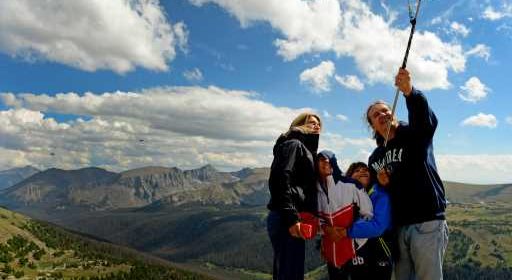Coronavirus: What to consider before your Colorado summer vacation

Summer has unofficially arrived, and after recent stay-at-home orders, many Coloradans are ready for — and in much need of — a vacation.
But not so fast.
While states, including Colorado, are beginning to reopen restaurants and parks, there’s still a global respiratory pandemic underway, and several regions across the nation are experiencing an uptick in cases of COVID-19, the respiratory disease caused by the new coronavirus.
So public health officials are encouraging Coloradans, especially those at risk for complications from the novel coronavirus, to turn their summer holidays into staycations. This is because each time a person leaves their home they risk exposure to — and potentially further spreading of — the coronavirus.
And when a person does go out, public health experts said, they should enjoy the outdoors and minimize their exposure to others.
People should “enjoy this summer in their home,” said Ubydul Haque, an assistant professor of biostatistics and epidemiology at the University of North Texas Health Science Center. “I encourage people not to travel.”
For those considering whether to travel, here are a few things to consider before you book a vacation.
Know before you go
Colorado is now in what state officials call a “Safer at Home and in the Vast, Great Outdoors” phase of its COVID-19 response, meaning residents are encouraged to stay home — or spend time outdoors and away from others.
Such restrictions vary across the country, and some in places, like Houston, public health officials could soon implement more stay-at-home orders as COVID-19 cases increase, the Houston Chronicle reports.
So Coloradans should research and abide by all orders in place at their destination, and avoid going to locations — either in-state or out-of-state — where there are travel restrictions, Mariah LaRue, a spokesperson for the state Department of Public Health and Environment, said in an email.
Public health experts recommend people stay within their local communities unless going to an outdoor recreation spot. And even there, people should consider areas where they can avoid large crowds and the risk of disease transmission is lower.
For example, pools, smaller lakes and beaches are more likely to have large crowds, so travelers should look at going when there are likely to be fewer people, said Glen Mays, a professor of health policy at the Colorado School of Public Health.
“The safest thing, for everyone, is to minimize your exposure to others,” LaRue added. “Activities like camping with people from your household using your equipment are lower risk than activities that involve more interpersonal interaction.”
Cars, planes or trains?
All modes of travel pose risks for infection because they are enclosed environments with limited air circulation. However, going somewhere by car carries a lower risk of COVID-19 transmission than flying or riding a train, according to public health experts.
This is because a person traveling by car is more likely to be by themselves or with members of their household, whereas planes and trains will have unknown individuals who are potentially carriers of the virus, Mays said.
Being in close proximity to other people for 15 minutes or longer is “a recipe for heightened transmission,” he said.
Even when traveling by car there is a risk of disease exposure, which is why public health officials are encouraging short trips that don’t involve many stops for gas or food, Mays said.
“Certainly the closer to home you can stay, the better from a public health perspective,” he said, adding, “There are definitely safe ways to recreate and have a good summer in the context of this pandemic.”
Limiting disease transmission when traveling
The new coronavirus mostly spreads via droplets when someone sneezes or coughs, and people are most at risk when they are within 3 to 6 feet of an infected person, including carriers of the virus who don’t have symptoms.
So when a person travels, they should wear a mask to cover their mouth and nose. They should also engage in social distancing, keeping at least 6 feet between themselves and others outside of their household.
People should also wash their hands frequently with soap and water and for at least 20 seconds. When unable to wash their hands, a person should use sanitizer with at least 60% alcohol, according to the state health department.
During car trips, people should disinfect surfaces — including door handles, steering wheels and radio knobs — regularly, LaRue said.
Anyone who is sick and have symptoms of COVID-19 should stay home and get tested. Symptoms can appear between two and 14 days after exposure, and include fever, cough, shortness of breath, sore throat, loss of taste and smell, and nausea, according to the U.S. Centers for Disease Control and Prevention.
People should also avoid risky activities as to not further burden or stretch local search and rescue and emergency teams, LaRue said
Source: Read Full Article